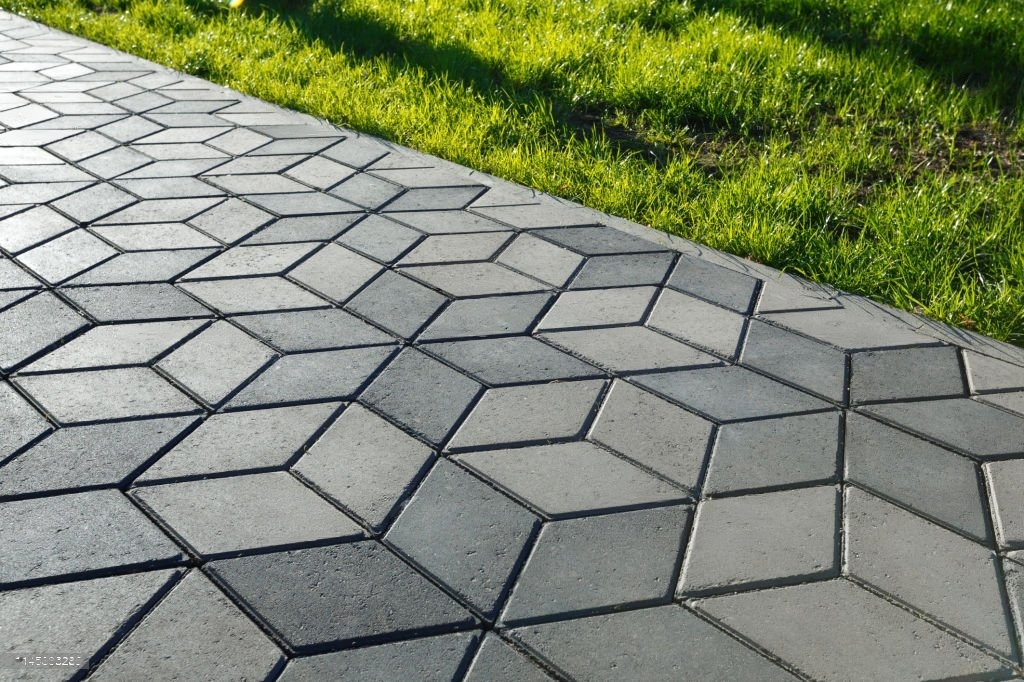Concrete pavers are popular for outdoor landscaping projects due to their durability, versatility, and cost-effectiveness. When considering easy DIY patio paver ideas, concrete pavers can offer a range of benefits compared to other materials.
One of the primary cost benefits of concrete pavers is their affordability. They are generally less expensive than natural stone pavers, making them an attractive option for those on a tight budget. Concrete pavers require minimal maintenance, reducing the long-term costs associated with upkeep.
Concrete pavers are also relatively easy to install, particularly when compared to natural stone pavers. With the right tools and some basic DIY skills, creating an attractive and functional patio using concrete pavers without needing professional assistance is possible. This can further reduce costs associated with labor and installation.
Another advantage of using concrete pavers is their ability to withstand harsh weather conditions. They are moisture-resistant, which means they are less likely to crack or shift due to freezing and thawing cycles. This durability can translate into cost savings over time, as fewer repairs and replacements will be needed.
Concrete pavers offer a range of cost benefits when creating a easy stone paver patio. They are affordable, low-maintenance, easy to install, and durable, making them an excellent choice for DIY enthusiasts looking to create an attractive outdoor space without breaking the bank.
What Is The Average Cost Of A Stone Driveway Paver?
Stone driveway pavers can add curb appeal and value to your home. If you’re considering a stone driveway, it’s essential to understand the costs involved. On average, a stone driveway paver costs around $10 to $30 per square foot, depending on the type of stone used.
One of the most popular stone choices for driveways is granite, which can cost between $10 and $25 per square foot. Another option is bluestone, which typically costs between $18 and $30 per square foot. Remember that the size of your driveway will impact the overall cost, so be sure to measure carefully before making any purchases.
If you’re looking for easy DIY patio paver ideas, consider using stone pavers to create a unique and durable patio. Stone pavers are available in various shapes, sizes, and colors, making it easy to create a custom look that complements your home’s exterior.
To create a comfortable stone paver patio, start by choosing suitable materials. Look for pavers explicitly designed for outdoor use, as they will be more durable and able to withstand the elements. You’ll also need to prepare the area by digging out the soil and laying a layer of sand to create a level base.
Once you have your materials and your area is prepped, you can start laying the pavers. Begin at one corner and work your way across, ensuring each paver is level before moving on to the next. Once all the pavers are in place, add a layer of sand over the top and use a broom to sweep it into the gaps between them.
The average cost of a stone driveway paver ranges from $10 to $30 per square foot. Stone pavers are also superb for easy DIY patio projects, providing a durable and customizable solution for creating a beautiful outdoor space.
How Do You Fix Pavers That Have Sunken In A Patio?
Regarding patios, pavers are popular due to their durability and aesthetics. However, over time, pavers can sink or become uneven, ruining the overall look of your patio. Here are some easy DIY patio paver ideas to fix sunken pavers.
First, remove the affected pavers and clean the area. Use a level to determine the amount of sinkage, and add or remove sand as needed. Replace the pavers and ensure they are level. Use a rubber mallet to tap them into place.
Another option is to use polymeric sand, which hardens and binds with the pavers to provide stability. Remove the affected pavers, clean the area, and add the sand. Reinstall the pavers, tap them into place, and sweep more sand into the joints to fill gaps.
If the sinkage is extensive, you may need to dig out the area and relevel the base before reinstalling the pavers. This option requires more time and effort but provides a more long-term solution.
Fixing sunken pavers on a patio is a simple DIY project that can be accomplished with essential tools and some elbow grease. Whether you add sand or dig out the area, your accessible stone paver patio will look as new in no time.
Why Does A New Concrete Patio Crack So Easily?
If you’re planning an easy DIY patio paver project or considering an accessible stone paver patio, it’s essential to understand why a new concrete patio can crack so easily.
One reason is that concrete is prone to cracking due to its rigid nature, especially if it needs to be installed correctly. Improperly prepared subgrade, lack of reinforcement, and too much water in the mix can also contribute to concrete cracking.
Another factor to consider is the weather. Extreme temperatures, freeze-thaw cycles, and heavy rain can all cause concrete to crack over time. Heavy loads, such as furniture or vehicles, can also contribute to cracking.
To prevent cracking, it’s essential to ensure that your patio is installed correctly, with a sturdy subgrade and appropriate reinforcement. You should avoid over-watering the mix and allow sufficient time to dry and set properly.
A new concrete paver can crack easily due to its rigid nature, improper installation, weather conditions, and heavy loads. To avoid cracking, it’s essential to take the necessary steps to ensure proper installation and maintenance. Consider alternatives like an accessible stone paver patio or DIY patio paver ideas to avoid cracking issues.





